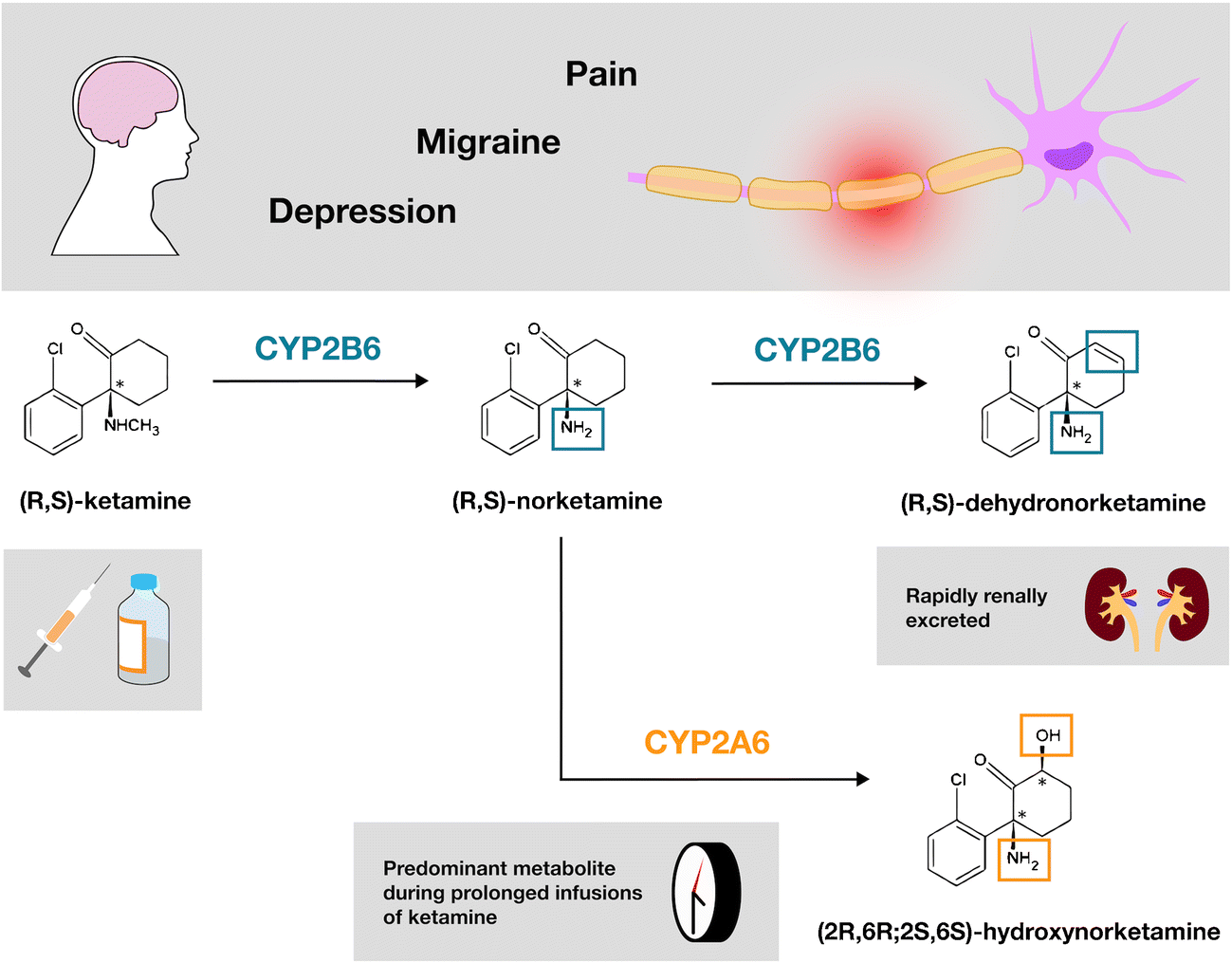Ketamine in the Past, Present, and Future: Mechanisms, Metabolites, and Toxicity (Schwenk, 2021)
Ketamine in the Past, Present, and Future: Mechanisms, Metabolites, and Toxicity - Current Pain and Headache Reports
https://link.springer.com/article/10.1007/s11916-021-00977-w
Purpose of Review While ketamine’s analgesia has mostly been attributed to antagonism of N-methyl-d-aspartate receptors, evidence suggests multiple other pathways are involved in its antidepressant and possibly analgesic activity. These mechanisms and ketamine’s role in the nociplastic pain paradigm are discussed. Animal studies demonstrating ketamine’s neurotoxicity have unclear human translatability and findings from key rodent and human studies are presented. Recent Findings Ketamine’s metabolites, and (2R,6R)-hydroxynorketamine in particular, may play a greater role in its clinical activity than previously believed. The activation of α-amino-3-hydroxy-5-methyl-4-isoxazolepropionic acid (AMPA) and the mammalian target of rapamycin by ketamine are mechanisms that are still being elucidated. Ketamine might work best in nociplastic pain, which involves altered pain processing. Summary While much is known about ketamine, new studies will continue to define its role in clinical medicine. Evidence supporting ketamine’s neurotoxicity in humans is lacking and should not impede future ketamine clinical trials.
